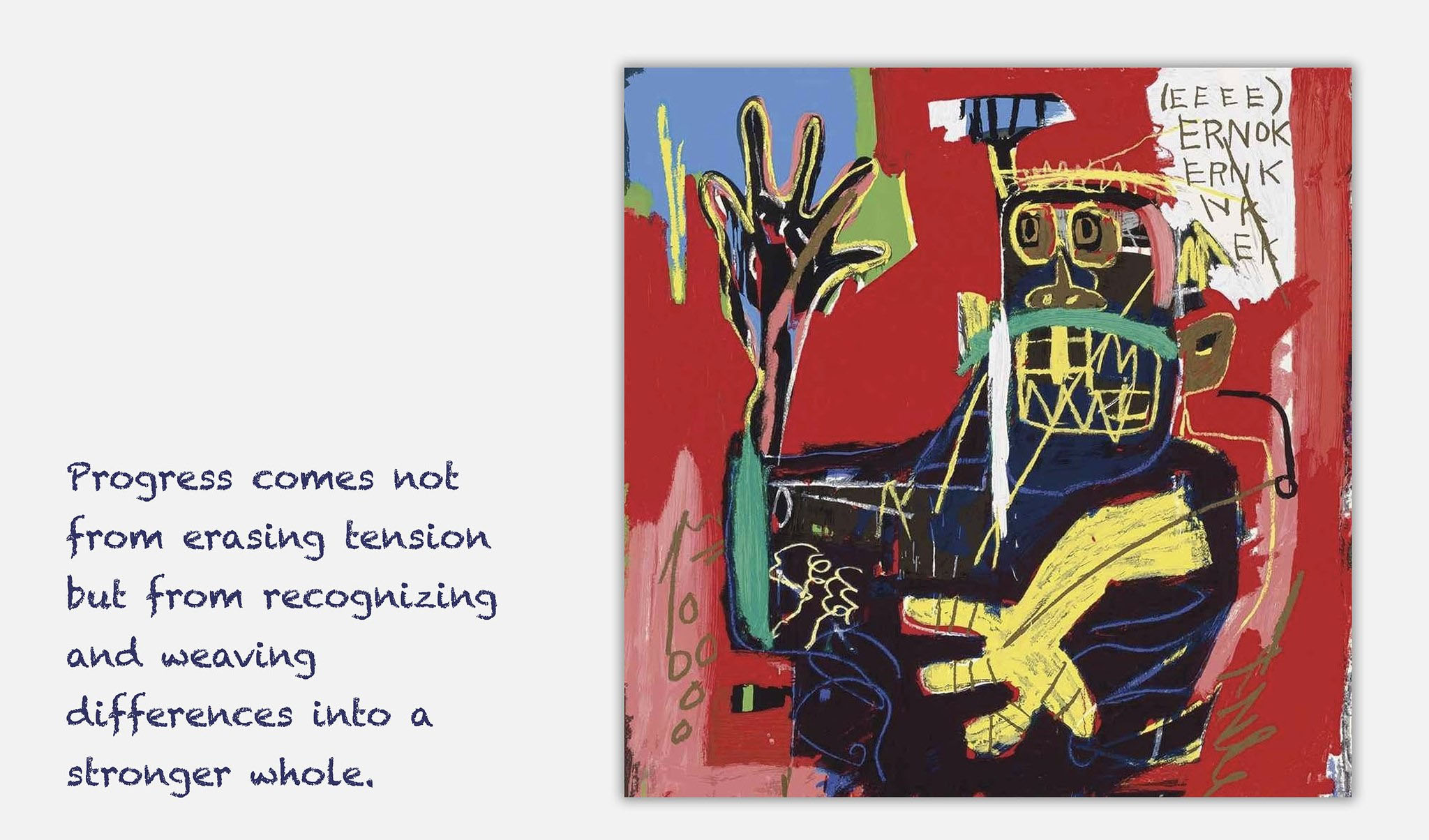By Bob Garlick | 3 Narratives News | September 12, 2025
The Core Tension
America’s divisions are not simply left versus right, but a deeper struggle between preservation — the instinct to protect freedoms, traditions, and identity — and renewal — the drive to repair injustices, expand fairness, and demand accountability. Healing requires pausing, listening, and weaving these instincts together.
Beyond Villains and Heroes
In the heat of today’s controversies, it is tempting to reduce public life to villains and heroes. A figure speaks, a corporation reacts, a politician weighs in — suddenly the nation feels compelled to choose a side. These storms are only the latest chapters in a long saga of cultural division.
What is often missing is acknowledgment of the gray space in between: the nuance that resists headlines but holds the key to real solutions. At its core, this isn’t about celebrities or even politicians. It’s about how a nation processes disagreement, power, and accountability.
Narrative One: Through the Preservation Lens
Those looking through this lens fear that freedoms, traditions, and identity are slipping away. They want a society that safeguards what is meaningful. The instinct to defend liberty and protect stability is rooted in care for community.
The challenge is to channel this energy into constructive expression — to protect rights without letting anger harden into the very force that divides them.
Narrative Two: Through the Renewal Lens
Those looking through this lens see harm and inequality that linger, and want institutions to step up and repair what feels broken. The instinct to demand accountability reflects a moral drive to improve society.
The challenge is to pair justice with compassion — to pursue change without closing the door to dialogue.
Narrative Three: The Silent Story — Trust and Its Erosion
The deeper issue is not only what controversies are about, but how they are experienced. The U.S. today faces an erosion of trust: trust in institutions, in leaders, and even in one another. Restoring that trust requires each side to give something up — whether it is the certainty of moral superiority or the assumption that others act only in bad faith.
History offers warnings. When disagreements harden into fractures, nations sometimes split — Czechoslovakia’s dissolution, or the violent partitions elsewhere. Yet history also shows renewal: after the turmoil of the 1960s and 70s, the U.S. found common ground on civil rights enforcement and environmental protection, despite divisions. Compromise was imperfect, but it kept the nation intact.
The question is whether today’s America can embrace that harder path — to treat controversies not as final battles between good and evil, but as tests of its ability to govern differences without tearing itself apart.
Narrative Four: When Passion Gets in the Way
By Carlos Taylhardat
Bob is right: healing divisions requires listening and weaving differences together. But what happens when the issue itself is so charged that compromise feels impossible?
Take abortion. For many women, restricting access is a matter of life and death — unsafe pregnancies and forced births could cost lives. For many Christians, abortion itself is the taking of life, a violation of the most fundamental commandment of their faith. In such a clash, it is not about dialogue. Each side believes they are literally defending lives — one of the mother, the other of the unborn child.
This is where passion overrides the possibility of listening. Similar fractures run through debates over:
- Guns: One side frames gun rights as protection of freedom and safety; the other sees gun proliferation as a public health crisis costing lives every day.
- Immigration: For some, strong borders are a matter of survival for a nation’s sovereignty; for others, deportations mean tearing families apart.
- Climate change: Environmentalists argue that delay equals planetary death; skeptics fear that drastic policies kill industries and livelihoods.
And beyond policy, there is something more human: the need to belong. Increasingly, belonging to one group — “the right” or “the left” — requires dismissing the other outright. Families are torn apart, friendships strained, holidays ruined. Loyalty to tribe overrides empathy for kin.
These are the moments when America’s rift stops being about nuance and starts being about survival. When passion turns opponents into enemies, dialogue no longer feels like an option. And yet, unless the country finds a way to channel passion into constructive engagement, it risks letting its fiercest debates destroy the very fabric of belonging they claim to defend.
I am sharing the following video because it’s the best debate about abortion I have ever seen, and certainly neither side will feel convinced, but it’s a way to witness the passion on this issue by both sides.
A Path Forward
Both preservation and renewal are essential, and America weakens if either is ignored. The task is not to erase differences but to weave them together: protecting what anchors people while improving what holds them back.
If citizens can learn to see these lenses not as rival camps but as complementary tools, then division becomes less of a wall and more of a balancing act. That is how a diverse democracy grows stronger — not by winning an endless tug-of-war, but by learning to hold the rope together.
Closing Thought
The fate of the United States will not be decided by the loudest voice in the latest controversy. It will be decided by whether Americans can resist the instinct to escalate, and instead take the slower, more difficult path of listening, balancing, and building a future together.

[…] Related reading: Sudan’s Silent War | The Rift Between Left and Right […]
[…] Related reading: Sudan’s Silent War | The Rift Between Left and Right […]
[…] quieter interventions may not grab headlines but represent the silent fractures of multilateralism — where the most vulnerable states face existential threats with few tools to enforce their […]